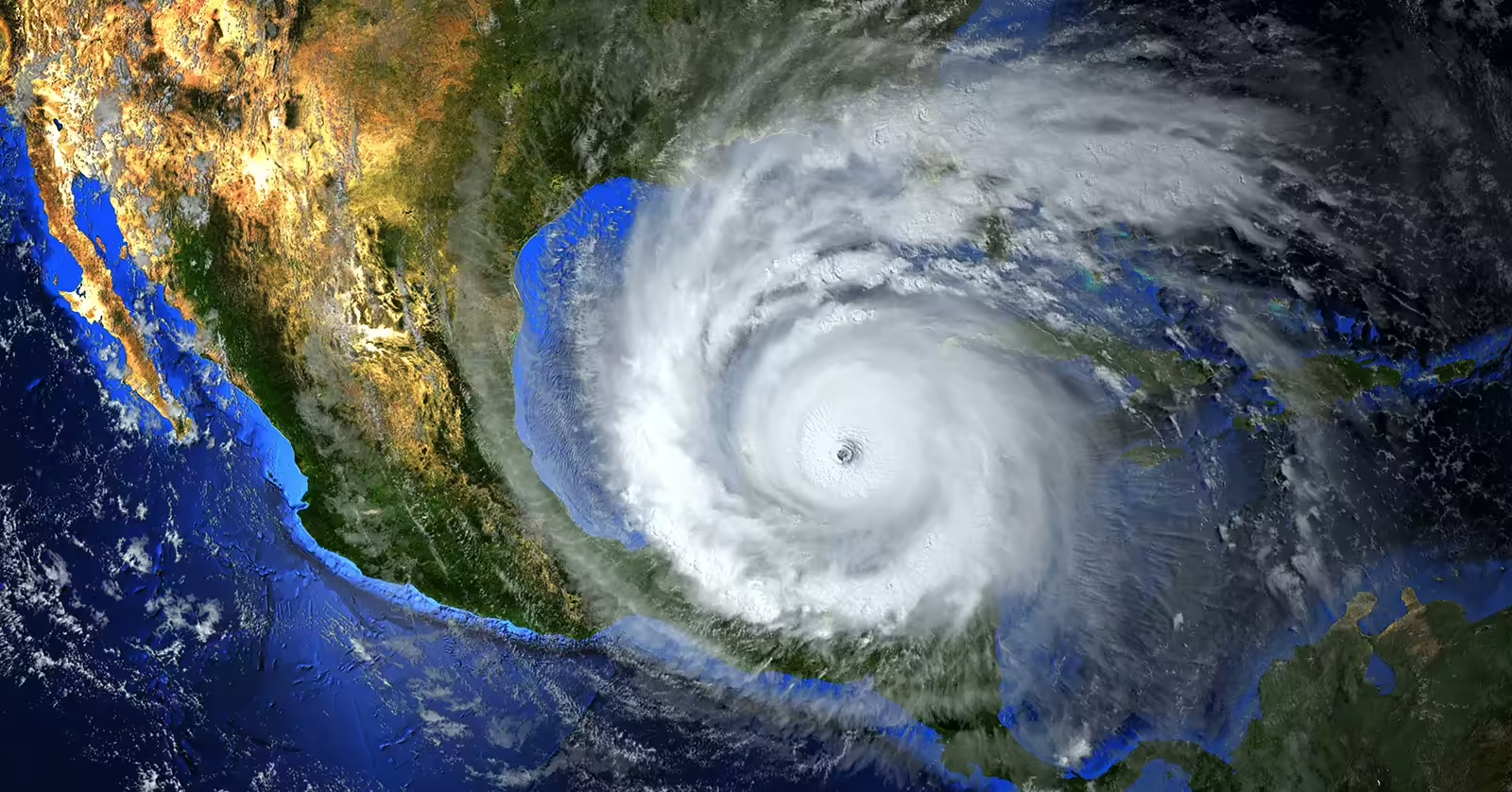Hurricane Preparedness for Injured Workers and Crews
May 31, 2023

Highly destructive and powerful, hurricanes present considerable danger to both people and property due to their formation over warm ocean waters. These tropical cyclones form over warm ocean waters, gaining strength as they move across vast expanses of water before making landfall.
Maritime workers face unique challenges during hurricanes due to their occupation. We will explore common injuries sustained by Jones Act seamen during these events and how they can protect themselves and their crewmates. In the high-stakes environment of a hurricane, these workers often encounter risks such as slips and falls on slick decks, trauma from loose equipment, hypothermia from prolonged exposure to severe weather, and potentially deadly accidents from failing to properly secure heavy machinery. We will delve into each of these areas, offering practical tips for mitigating risks and promoting safety in the eye of the storm. Furthermore, we will discuss the legal protections and compensations that Jones Act seamen are entitled to, ensuring that maritime workers are well-equipped to handle the unpredictable threats posed by hurricanes.
Understanding Hurricanes and Their Formation
Hurricanes, also known as tropical cyclones or typhoons, are powerful storms that form over warm ocean waters.
They begin as a tropical depression and can grow into massive weather systems with winds reaching at least 74 miles per hour.
These storms pose significant risks to coastal communities and those working offshore, such as Jones Act seamen.
The Role of Warm Ocean Temperatures in Hurricane Formation
Warm ocean temperatures play a crucial role in the development of hurricanes.
When water temperatures rise above approximately 80°F (27°C), it causes the air above the surface to become warmer and more humid.
This leads to rising air currents that create an area of low pressure near the surface, which then allows for thunderstorms to develop.
As these thunderstorms cluster together around this area of low pressure, they may eventually organize into a tropical depression – the first stage in hurricane formation.
In order for a storm system like this to intensify further into a full-blown hurricane, additional factors come into play such as weak vertical wind shear allowing for continued upward motion within the developing storm system without being torn apart by stronger upper-level winds.
Additionally, ample moisture from both evaporation off nearby oceans & condensation processes occurring within clouds themselves is necessary too so fueling growth overall becomes possible when conditions align just right.
Meteorologists’ Use of Computer Forecasting Models for Storm Tracking
To better predict where hurricanes will go and how strong they might become once formed out on open seas near vulnerable coastlines worldwide including U.S territories alike – meteorologists rely heavily upon advanced computer forecasting models which help them track potential storm paths more accurately than ever before.
Using sophisticated algorithms to analyze atmospheric pressure patterns, ocean temperatures, and wind speeds at various levels in the atmosphere – meteorologists are able to generate more accurate predictions about storm paths and potential intensity changes over time.
By analyzing these data points together using sophisticated algorithms within their software programs designed specifically for this purpose – meteorologists can generate predictions about where storms might head next along with possible intensity changes over time too so people living or working nearby have ample warning should danger approach. https://www.nhc.noaa.gov/.
For those employed offshore under Jones Act legislation (e.g., seamen), having access to up-to-date information regarding natural disasters like hurricanes is crucial since it allows them an opportunity to prepare accordingly ahead of time if needed by either evacuating from harm’s way altogether or securing all equipment & vessels safely until conditions improve once again post-storm passing through local areas being impacted most directly overall.
In this sense then – staying informed about current weather trends plays an essential role when trying best to protect oneself against potential dangers posed by powerful storms.
Injuries Sustained by Jones Act Seamen During Hurricanes
Extreme weather events like hurricanes pose a threat not only to coastal residents but also to Jones Act seamen who may suffer injuries or even death during these natural disasters near U.S shores and territories, such as Puerto Rico where Hurricane Fiona struck.
Types of Common Injuries Sustained by Maritime Workers During Hurricanes
- Falls: High winds, heavy rain, and rough seas can cause slips, trips, and falls that could result in broken bones, sprains, head trauma, or even drowning if swept overboard.
- Flying Debris: Strong gusts can turn loose equipment into dangerous projectiles, causing cuts, bruises, and fractures.
- Falling Objects: Heavy objects like cargo containers or cranes might become dislodged from their positions due to intense storm surges, leading to potentially severe crush-related wounds.
- Drowning: If a vessel capsizes or sinks because it cannot withstand the forceful waves produced by tropical cyclones, those onboard are at significant risk for drowning, especially if they are unable to reach life-saving equipment in time.
Maritime Employers Must Take Steps to Protect Their Crew Members During Poor Weather Conditions
- Monitoring Weather Conditions: Employers should closely monitor weather forecasts and heed warnings from authorities such as the National Hurricane Center to evacuate vessels or secure them properly before a storm hits.
- Maintaining Equipment: Regular inspections and maintenance of safety gear like life jackets, emergency beacons, and life rafts can ensure that they function correctly when needed most. Additionally, securing loose items on deck can prevent accidents caused by flying debris.
- Safety Training: Providing comprehensive safety training for all crew members helps ensure everyone knows how best to react under extreme circumstances, minimizing potential injuries sustained while navigating through treacherous conditions brought about by tropical cyclones and other offshore hazards.
- Create an Emergency Plan: A well-prepared emergency plan outlining specific roles and responsibilities during hurricane events allows for a more organized response, which could ultimately save lives onboard affected vessels.
Potential Implications for Maritime Industries Working in Areas Prone to Hurricanes
Maritime industries such as those employing Jones Act seamen must adapt to the dangers associated with hurricanes. The following are some potential implications for these workers:
- Increase in storm-related injuries: With more powerful storms comes a higher likelihood of injury or even death for offshore workers caught in their path. As mentioned earlier, common injuries sustained by Jones Act seamen during hurricanes include falls due to unstable footing and being struck by flying debris.
- Greater need for safety measures: Employers will have to invest more resources into ensuring the safety of their crew members during extreme weather events. This may involve implementing stricter protocols, providing better training on emergency procedures, and investing in advanced technologies that can help predict and track hurricane paths with greater accuracy (National Hurricane Center).
- Economic impacts: More frequent and intense hurricanes could lead to disruptions in maritime trade routes, resulting in economic losses not only for individual companies but also entire industries reliant on ocean transportation.
To mitigate these risks associated with future hurricanes fueled by climate change, it is crucial that both governments and private sectors work together towards developing comprehensive strategies aimed at protecting coastal communities as well as vulnerable offshore workers like Jones Act seamen. Such efforts should focus on improving early warning systems, enhancing infrastructure resilience against natural disasters like tropical cyclones, and promoting sustainable practices within the maritime industry – all while continuing global initiatives aimed at combating climate change itself.
What are 5 interesting facts about hurricanes?
Hurricanes are powerful storms with unique characteristics:
- Their wind speeds can exceed 155 mph, making them extremely destructive.
- They form over warm ocean waters near the equator and gain strength as they travel.
- A hurricane’s eye is a calm area at its center, surrounded by a wall of severe weather called the eyewall.
- On average, there are six Atlantic hurricanes per year, three of which become major (Category 3 or higher).
- Hurricane season lasts from June to November in the Atlantic basin and May to November in the Eastern Pacific.
How do hurricanes form?
Hurricanes develop when warm ocean water evaporates into moist air that rises and cools. This process forms clouds and releases heat energy. As more air rushes in to replace rising air, it begins spinning due to Earth’s rotation. The storm system gains organization and intensity as it moves across open water, eventually forming a tropical cyclone if conditions remain favorable. Learn more about this process through these informative articles: NOAA Ocean Service and National Weather Service JetStream.
What are some notes about hurricanes?
In addition to their formation process:
- Hurricanes have different names depending on their location: typhoons (Western Pacific), cyclones (Indian Ocean), or simply tropical cyclones.
- They are classified into five categories based on wind speed, using the Saffir-Simpson Hurricane Wind Scale.
- Hurricanes can cause storm surges, torrential rain, and flooding in addition to destructive winds.
- Preparation and evacuation plans are essential for communities at risk of hurricanes.
- Climate change may influence hurricane frequency and intensity in the future.
What was the worst hurricane in history?
The deadliest hurricane on record is the Great Galveston Hurricane of 1900. It struck Texas with estimated Category 4 strength, killing between 6,000-12,000 people due to a massive storm surge that inundated much of Galveston Island. For more information about this devastating event, visit the National Weather Service’s page on the Great Galveston Hurricane.
Contact Our Top-Rated Maritime Injury Lawyers at Morrow & Sheppard LLP For A Free Consultation
Understanding the formation and impact of hurricanes is crucial for those working in maritime industries. It is important to have knowledge about the common injuries sustained by workers during these extreme weather conditions and the steps taken by employers to protect their crew members. This will help injured workers to better prepare themselves for hurricane events in their area.
If you or someone you know has been injured while working during a hurricane event, contact the experienced maritime injury attorneys at Morrow & Sheppard LLP today for legal assistance with your case.
Daniel Sheppard is licensed to practice personal injury law in Texas and Louisiana. Daniel takes pride in providing exceptional service to clients who were seriously hurt on the job and brings his relentless work ethic into the office and the courtroom. Learn more about Daniel.
- Home
- |
- Offshore Injury
- |
- Hurricane Preparedness for Injured Workers...
















































